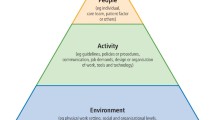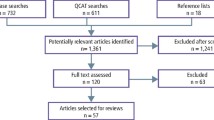Abstract
Introduction This paper explores the declared and formal and informal taught endodontic curriculum within an undergraduate dental programme in the UK as part of a wider study, which also investigates the learned curriculum. Management of the dental pulp was chosen due to the availability of clear internationally recognised guidelines.
Method The declared curriculum was identified through existing course guides and seminar and practical session plans. The formal taught curriculum was identified by cataloguing all lectures, practical teaching sessions, seminars and handouts available to dental students. Questionnaires using clinical vignettes were used to explore the informal taught curriculum.
Results Valid responses to the questionnaire were received from 25/40 (62.5%) clinical supervisors. Disparities between national guidelines and the declared and taught curriculum were primarily due to broad learning objectives and disparate information from lectures and supervising clinicians. Although the majority of formal teaching aligned with national guidelines, the main deviation occurred within the informal taught curriculum.
Conclusion This study highlights disparities between current evidence-based guidelines and the declared and taught curriculum in relation to pulp management in a UK dental school. Recommendations are that all policies, procedures and protocols are updated and aligned to a contemporaneous evidence base annually, plus engagement with clinical lecturers, to enable more standardised teaching.
Key points
-
Disparities exist between current evidence-based guidelines and the declared and taught endodontic curriculum at a UK dental school.
-
The main deviation occurred within the informal taught curriculum during patient encounters in the clinical environment.
-
Recommendations include: clear delivery of current guidelines during lectures; all policies, procedures and protocols to be updated and aligned to a contemporaneous evidence base annually; and clinical teacher training to be provided to allow for more standardised teaching in the clinical environment.
This is a preview of subscription content, access via your institution
Access options
Subscribe to this journal
Receive 24 print issues and online access
$259.00 per year
only $10.79 per issue
Buy this article
- Purchase on Springer Link
- Instant access to full article PDF
Prices may be subject to local taxes which are calculated during checkout

Similar content being viewed by others
References
General Dental Council. Standards for the Dental Team. 2014. Available at https://www.gdc-uk.org/docs/default-source/standards-for-the-dental-team/standards-printer-friendly-black-white3e2c002f471e475eac4a4fcc1e4945a2.pdf?sfvrsn=3963b738_5 (accessed April 2022).
Field J C, Cowpe J G, Walmsley A D. The Graduating European Dentist: A New Undergraduate Curriculum Framework. Eur J Dent Educ 2017; DOI: 10.1111/eje.12307.
Tanner D, Tanner L. Curriculum Development: Theory Into Practice. New York: Macmillan, 1980.
Dent J A, Harden R M. A Practical Guide for Medical Teachers. London: Elsevier, 2013.
Scott K R, Hsu C H, Johnson N J, Mamtani M, Conlon L W, DeRoos F J. Integration of social media in emergency medicine residency curriculum. Ann Emerg Med 2014; 64: 396-404.
Zhang J, Peterson R F, Ozolins I Z. Student approaches for learning in medicine: what does it tell us about the informal curriculum? BMC Med Educ 2011; 11: 87.
Edwards D, Bailey O, Stone S, Duncan H. The management of deep caries in UK primary care: A nationwide questionnaire-based study. Int Endod J 2021; 54: 1804-1818.
Schwendicke F, Frencken J E, Bjørndal L et al. Managing Carious Lesions: Consensus Recommendations on Carious Tissue Removal. Adv Dent Res 2016; 28: 58-67.
Duncan H F, Galler K M, Tomson P L et al. European Society of Endodontology position statement: Management of deep caries and the exposed pulp. Int End J 2019; 52: 923-934.
American Association of Endodontists. AAE Position Statement on Vital Pulp Therapy. 2021. Available at https://www.aae.org/wp-content/uploads/2021/05/VitalPulpTherapyPositionStatement_v2.pdf (accessed October 2021).
British Endodontic Society. A Guide to Good Endodontic Practice. 2022. Available at https://britishendodonticsociety.org.uk/_userfiles/pages/files/a4_bes_guidelines_2022_hyperlinked_final.pdf (accessed August 2023).
Kundzina R, Stangvaltaite L, Eriksen H M, Kerosuo E. Capping carious exposures in adults: a randomized controlled trial investigating mineral trioxide aggregate versus calcium hydroxide. Int Endod J 2017; 50: 924-932.
Harms C S, Schäfer E, Dammaschke T. Clinical evaluation of direct pulp capping using a calcium silicate cement-treatment outcomes over an average period of 2.3 years. Clin Oral Investig 2019; 23: 3491-3499.
Edwards D, Burns L, Witton R, Tredwin C. MTA or calcium hydroxide for direct pulp capping in fully developed permanent teeth: a systematic review. Endod Pract Today 2020; 14: 91-102.
Cushley S, Duncan H F, Lappin M J et al. Efficacy of direct pulp capping for management of cariously exposed pulps in permanent teeth: a systematic review and meta-analysis. Int Endod J 2021; 54: 556-571.
American Association of Endodontics. Endodontics: Colleagues for Excellence - Endodontic Diagnosis. Available at www.aae.org/colleagues (accessed March 2021).
Eren B, Onay E O, Ungor M. Assessment of alternative emergency treatments for symptomatic irreversible pulpitis: a randomized clinical trial. Int Endod J 2018; 51: 227-237.
Gemmell A, Stone S, Edwards D. Investigating acute management of irreversible pulpitis: a survey of general dental practitioners in North East England. Br Dent J 2020; 228: 521-526.
Edwards D, Bailey O, Stone S J, Duncan H. How is carious pulp exposure and symptomatic irreversible pulpitis managed in UK primary dental care? Int Endod J 2021; 54: 2256-2275.
Jisc. Homepage. Available at https://www.jisc.ac.uk (accessed June 2021).
Field A. Discovering Statistics Using IBM SPSS Statistics. 5th ed. California: SAGE Publications Ltd, 2017.
British Endodontic Society. Diagnosis and Management of Endodontic Emergencies, a British Endodontic Society Position Paper for Primary Dental Care and other healthcare providers during the COVID-19 pandemic. 2020. Available at https://www.nhsggc.org.uk/media/259572/bes-emergency-protocol-final-document-29-march-2020.pdf?msclkid=db2d031fbaa311ecaa25c79dec0f494d (accessed April 2022).
Harden R M. Learning outcomes and instructional objectives: is there a difference? Med Teach 2002; 24: 151-155.
Bateman H L, McCracken G I, Thomason J M, Ellis J S. Learning outcomes: Exploring implications of adopting a different level of detail. Eur J Dent Educ 2018; 22: 86-91.
General Dental Council. Dental education. Available at https://www.gdc-uk.org/education-cpd/quality-assurance (accessed October 2021).
General Dental Council. Preparing for Practice. 2015. Available at https://www.gdc-uk.org/docs/default-source/quality-assurance/preparing-for-practice-(revised-2015).pdf (accessed August 2023).
Ricucci D, Siqueira J F Jr, Li Y, Tay F R. Vital pulp therapy: histopathology and histobacteriology-based guidelines to treat teeth with deep caries and pulp exposure. J Dent 2019; 86: 41-52.
Demant S, Dabelsteen S, Bjørndal L. A macroscopic and histological analysis of radiographically well-defined deep and extremely deep carious lesions: carious lesion characteristics as indicators of the level of bacterial penetration and pulp response. Int Endod J 2021; 54: 319-330.
Bjørndal L, Fransson H, Bruun G et al. Randomized Clinical Trials on Deep Carious Lesions: 5-Year Follow-up. J Dent Res 2017; 96: 747-753.
Maltz M, Koppe B, Jardim J J et al. Partial caries removal in deep caries lesions: a 5-year multicentre randomized controlled trial. Clin Oral Investig 2018; 22: 1337-1343.
Baume L J, Holz J. Long term clinical assessment of direct pulp capping. Int Dent J 1981; 31: 251-260.
McGleenon E L, Morison S. Preparing dental students for independent practice: a scoping review of methods and trends in undergraduate clinical skills teaching in the UK and Ireland. Br Dent J 2021; 230: 39-45.
Bartle E K, McGowan K M. Clinical supervisors' reflections on their role, training needs and overall experience as dental educators. Eur J Dent Educ 2021; 25: 282-290.
Martin N, Fairclough A, Smith M, Ellis L. Clinical educators' views on the quality of undergraduate clinical restorative dentistry in the UK and ROI. Eur J Dent Educ 2011; 15: 216-222.
NHS. What dental services are available on the NHS? Available at https://www.nhs.uk/nhs-services/dentists/what-dental-services-are-available-on-the-nhs/ (accessed October 2021).
Author information
Authors and Affiliations
Contributions
Study conception and design: Laura Brooks, David Edwards, James Field, Janice Ellis. Data collection: Laura Brooks, David Edwards. Analysis and interpretation of results: Laura Brooks, David Edwards. Draft manuscript preparation: Laura Brooks. All authors reviewed the results and approved the final version of the manuscript.
Corresponding author
Ethics declarations
The authors declare no conflicts of interest.
Ethical approval was awarded by Newcastle University Research Ethics Committee (REF: 12993/2020).
All participants consented to participate in the study and for their data to be used as part of the research and published.
Data availability
The authors confirm that the data supporting the findings of this study are available within the article and its supplementary materials.
Supplementary Information
Rights and permissions
Springer Nature or its licensor (e.g. a society or other partner) holds exclusive rights to this article under a publishing agreement with the author(s) or other rightsholder(s); author self-archiving of the accepted manuscript version of this article is solely governed by the terms of such publishing agreement and applicable law.
About this article
Cite this article
Brooks, L., Edwards, D., Field, J. et al. Exploring the declared and the formal and informal taught curricula at a UK dental school through the lens of pulp management. Br Dent J 236, 117–123 (2024). https://doi.org/10.1038/s41415-024-6762-8
Received:
Revised:
Accepted:
Published:
Issue Date:
DOI: https://doi.org/10.1038/s41415-024-6762-8



